Just like you get fitted for that perfect pair of running shoes, your dog needs to be fitted with a harness. With so many options to choose from, you want to make sure you’re choosing a dog harness that is safe and comfortable. Learn about some of the most popular types of dog harnesses and how to measure your dog for a harness.

Contents:
- Are harnesses or collars better for your dog?
- What’s the best dog harness style?
- How to measure your dog for a harness
- Frequently asked questions about dog harnesses
Is it better to walk your dog in a harness or collar?
The solution to the harness vs collar debate depends on your dog and your personal preferences. If your dog walks well on a lead, a dog collar might be all you need when walking. Dog collars are quick and easy to put on and also a convenient place to attach an ID tag and council registration tags.
However, if your dog is a puller, collars can cause chafing and choking. Whereas a harness distributes your dog’s weight over a wider area and typically won’t press on their throat if it fits well.
What’s the best dog harness?
Dog harnesses come in a range of styles and prints. Broadly speaking, there are two types of dog harnesses: step-in harnesses and over-head harnesses. Within those categories there are harnesses designed for a specific purpose, like training harnesses and car harnesses.
The “best” harness for you and your dog will depend on what you need form a harness and your personal preferences.
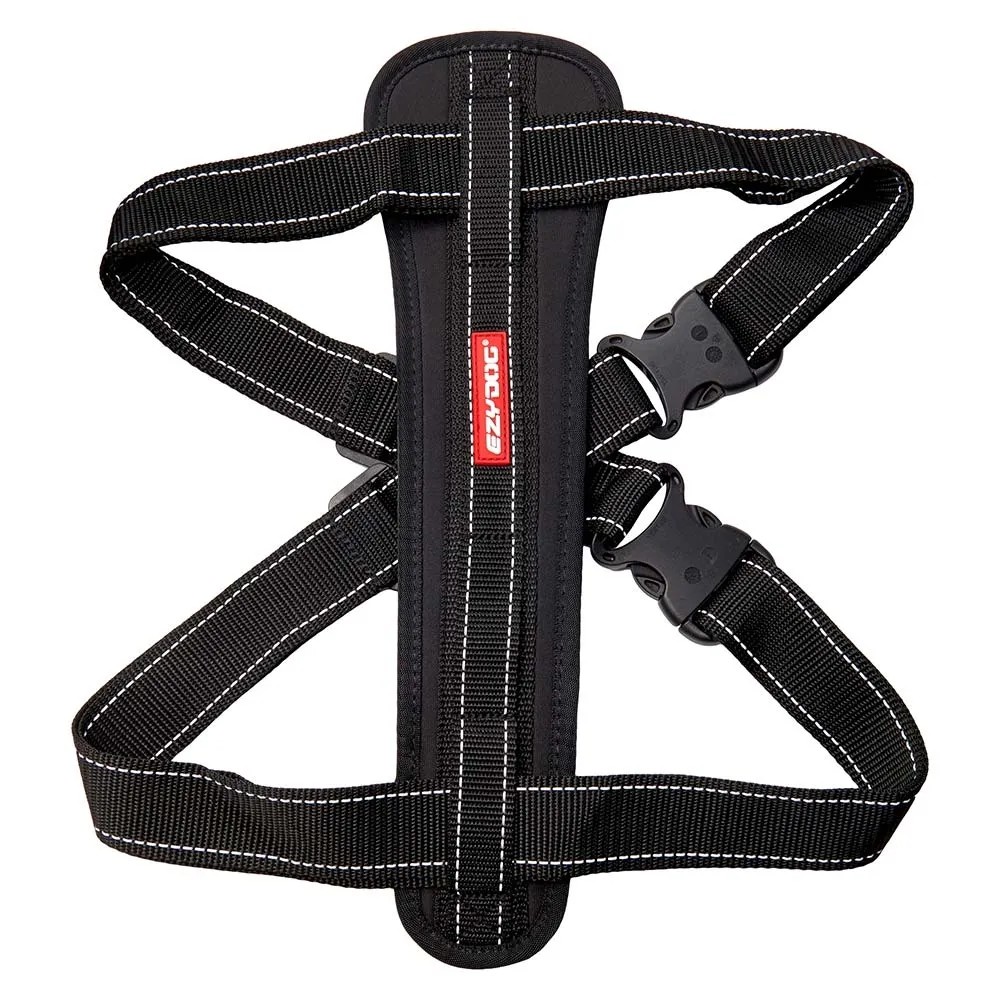
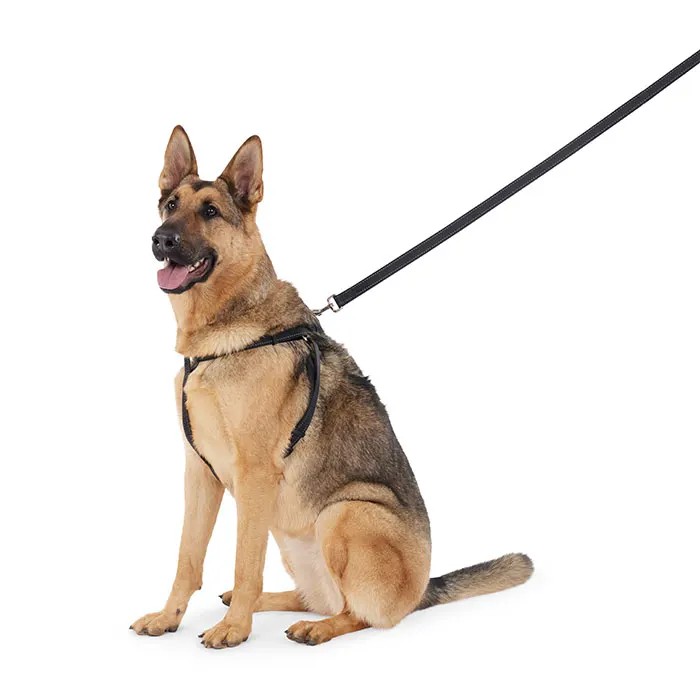
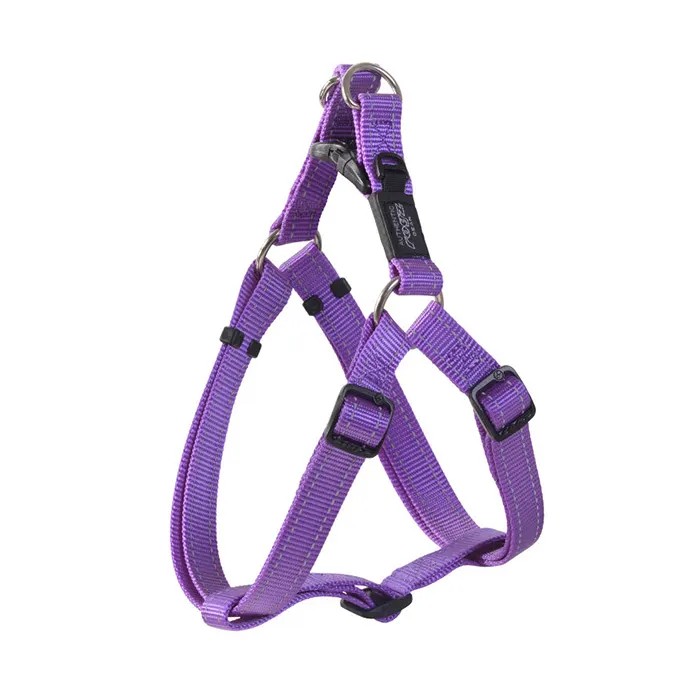
Step-in harness
As the name suggests, a step-in harness is one a dog “steps in” to. You put their legs in the through the leg holes then clip the buckle, which is usually at the dog’s back. They’re a good option for dogs who don’t like things sliding over their head.
Step-in harnesses are easy to put on (once you figure out where the leg holes are) but may be less secure if not fitted well. Depending on the design, some are highly adjustable.

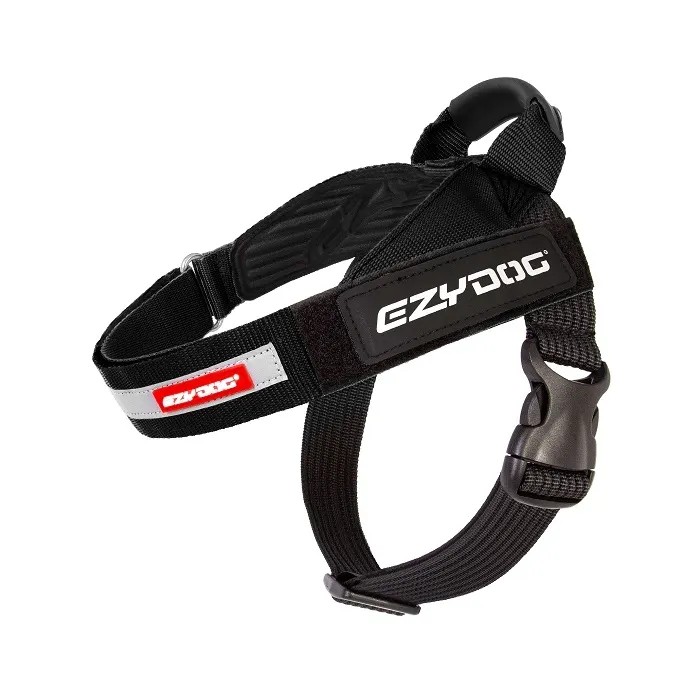
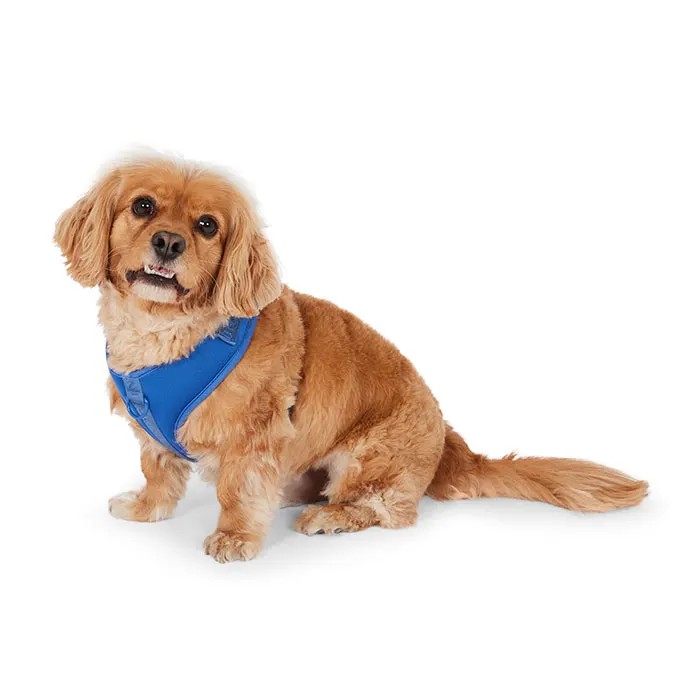
Over-head harness
Over-head harnesses are harnesses you slide over your dog’s head. The buckles in these harnesses tend to be on the side. They can be easier to put on than step-in harnesses, especially for older dogs who struggle to pick up their legs or wriggly young pups.
These harnesses usually have more padding. However, some may be less adjustable around the neck area (depending on the style and design).

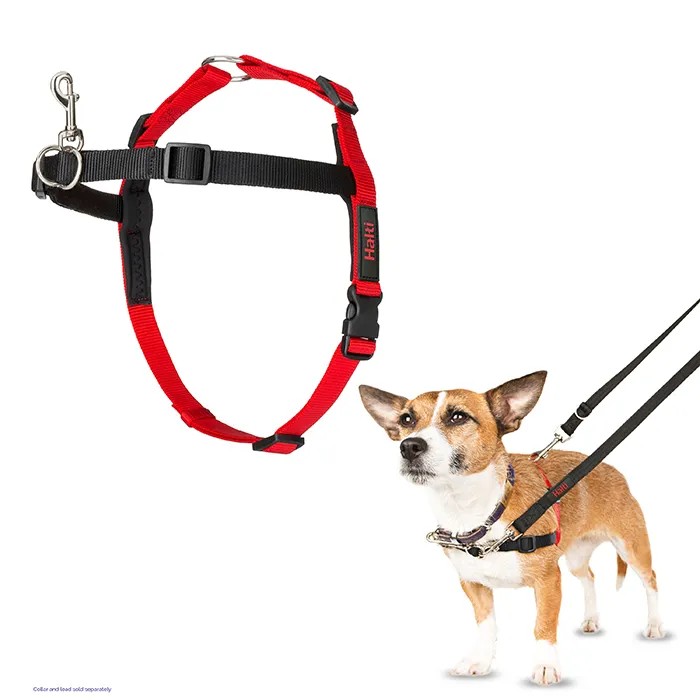
No-pull harness
No-pull harnesses are designed to discourage dogs from bracing against their harness and pulling you along. There are a few different styles, but most work by having some mechanism that prevents or discourages your dog from bracing against the harness.
If you want your dog to stop pulling on the lead, these harnesses are only part of the solution. You should also give your dog some refresher lessons on how properly walk on a loose lead. If you need extra help, Petbarn Dog School has classes for dog of all ages.
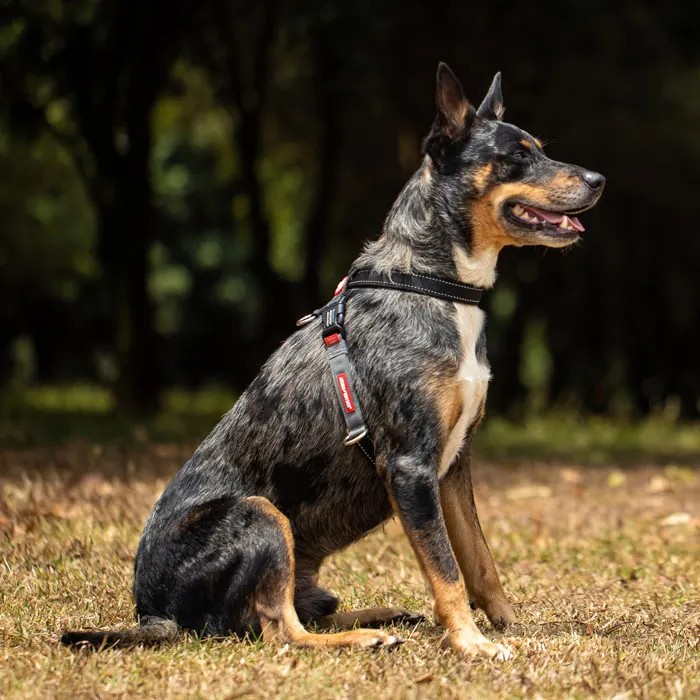
Training harness
Training harnesses are training tools. They allow you to give your dog a “check”, usually through applying a brief moment pressure by tightening at a certain point. Depending on the style of harness, this pressure might be applied around the girth or, in the case of head collars, under the chin.
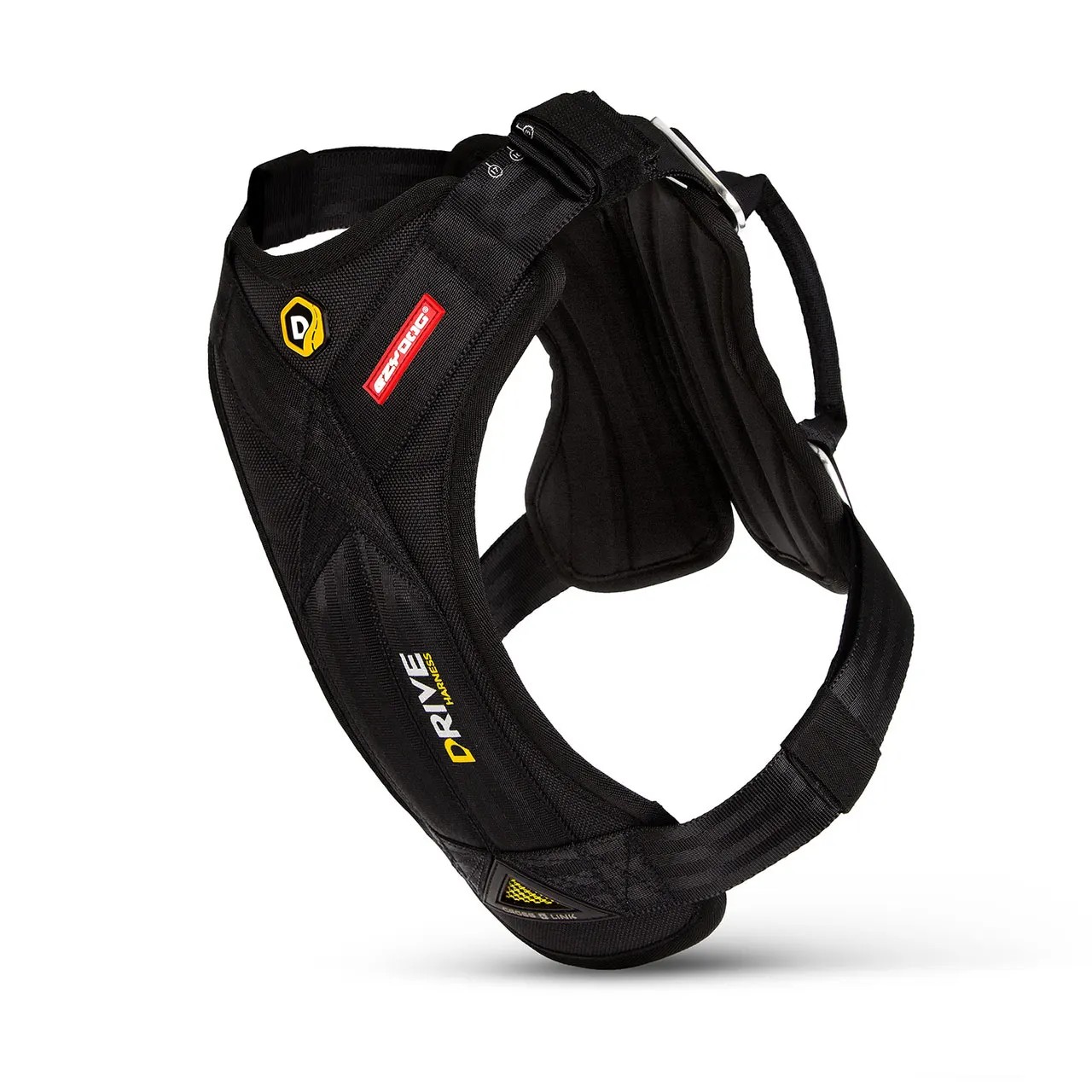

Car harness
A car harness is specifically designed to help restrain your dog in the car. Rather than having to attach a separate seatbelt attachment to a standard harness, these harnesses are designed to attach directly to your car’s seatbelt or seatbelt holder. Some car safety harnesses have even been crash tested.
How to measure your dog to find their harness size
A well-fitted harness starts with the right measurements. When measuring your dog, focus on their chest and neck measurements.

- Find a flexible tape measure
- Measure the widest part of your dog’s chest (their girth). Start at the bottom of the rib cage, over the back, and meet where the tape starts.
- Measure the thickest part of your dog’s neck, just above their shoulders.
- Try on a harness! You’ll find a range of comfortable harnesses with sizing guides at your local Petbarn, along with team members who are ready to help you if needed.
- Adjust the straps as needed. As a rule of thumb, the straps should be firm but loose enough that you can fit two fingers underneath.
Frequently asked questions about dog harnesses
Should I choose a harness or collar with metal or plastic buckles?
Plastic buckles are easier to fasten – best if you’re parenting a dog who’s an easy walker and enjoys lighter exercise. They’re one of the most common types of buckles you’ll find on harnesses.
For those dogs on the more energetic side or, if you’re purchasing a harness for car travel, metal buckles are sturdier and won’t pinch.
How tight should my dog’s harness be?
Most harnesses are highly adjustable for comfort and safety. Every dog is different and, while the harness should already roughly fit, adjusting the harness on your dog will have it fitting like a glove. If you can’t fit two fingers underneath the harness straps, it’s too tight.
What’s the best harness for Greyhounds
Greyhounds have a unique physique. Their deep chests but relatively small necks can make finding a harness that fits challenging. Look for harnesses that where both the neck and chest straps are adjustable.
What’s the best harness for a Staffy?
Staffies are some of the friendliest and excitable dogs you’ll ever meet, and they’re also very strong.
Considering these personality traits, you might want to go for an over-head harness – they’re faster to put on your Staffy who is so excited for a walk they can barely stand still. Just make sure the head hole is big enough for their large heads.
If your Staffy dragging you along to meet new friends, consider looking at no-pull harnesses that offer more control.
What’s the best harness for a Dachshund?
Finding a well-fitting harness for your Dachshund can be challenging thanks to their relatively deep, wide chests and long bodies for their size. Look for one that has highly adjustable neck and girth straps and doesn’t sit too short against their chest bone.

At Petbarn you can find a wide range of dog harnesses. Struggling to find the right fit? Feel free to chat with a friendly team member at your local Petbarn for more advice on finding the right harness for your dog.
